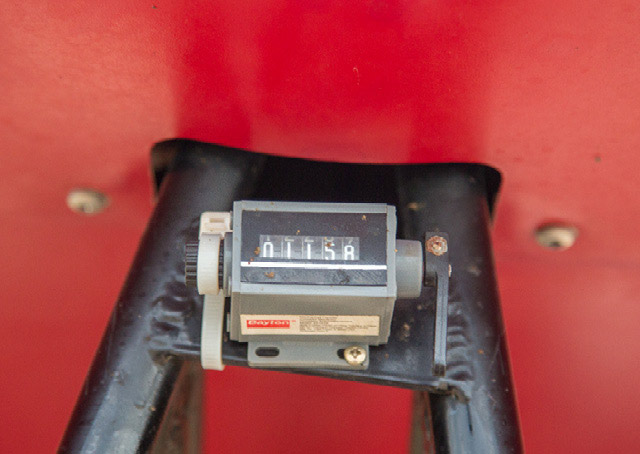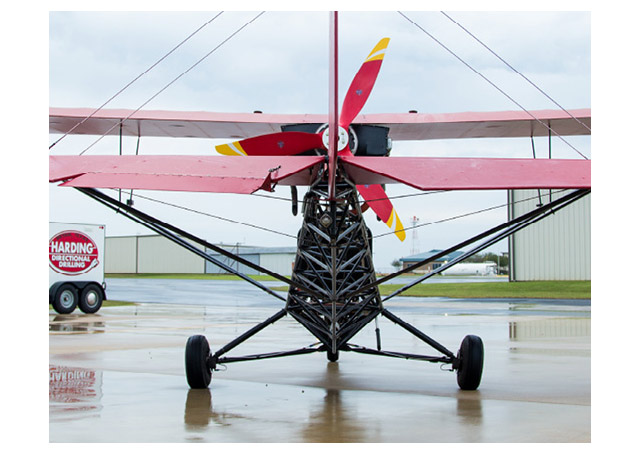The best Breezy around
Flying won’t get any better than this until you qualify for angel’s wings
When I put my Breezy on the market in the spring of 2013, I wanted it to go to someone who would enjoy it for what it was and continue to give rides to all comers. In the 22 years I owned N7BK, I gave an estimated 500 rides. Carl Unger, who was one of the Breezy’s designers, gave thousands of free rides over the years at the Experimental Aircraft Association’s annual celebration of flight at Oshkosh. That prototype is now in the EAA AirVenture Museum.
Unger and his co-designers, Charles Roloff and Robert Liposky, obviously wanted to create an airplane that was as simple as could be devised and still get off the ground—and safely back. Their creation was a naked, high-wing, tricycle-gear pusher with a pilot’s seat mounted forward and a passenger seat behind that. The builder has to weld up the frame, and then put wings, gear, and a tail from an existing aircraft on it, shortening the build time considerably. N7BK was built by Bernard Kreifels in Sioux Falls, Nebraska. He used the wings of a Champ 7EC; generic Champ gear, tail, and stick; and a Lycoming O-290-D2 engine capable of 140 horsepower at 2,800 rpm for five minutes and 135 horsepower continuous at 2,600 rpm.
So in April 2013, I met two of the new buyers, Stephen Pearce and Tim Harding; decided they looked sober enough; and said goodbye to one of my life’s great adventures. Actually, there are three partners in the Breezy—the third is master machinist Dave Weber, who owns a shop employing 40 machinists. All three live in Bryan, Texas. Stephen is the A&P of the trio, so the Breezy resides in his hangar.
I recently went to Texas at Stephen’s invitation, and was overwhelmed at what dedicated airplane nuts can accomplish. The hangar door opens—and there is one of the finest hangar set-ups I have ever seen, along with that absolute hangar essential, a refrigerator.
When your eye stops roving, you realize that a Breezy resides in this wonderful place. Looking it over, the first thing that struck me was the new, three-blade red and yellow prop, one made by Craig Catto. Stephen was sure a three-blade prop, properly designed, would be more efficient than the old two-blade and impart less vibration to the frame—and he was right. The prop is made of wood covered by composite.
Stephen went over the airplane with me inch by inch. When the three new owners first got N7BK, Stephen and Dave cleaned off what corrosion they found and went over all the tubes and every weld. Then they assessed what they needed or wanted to do to the airplane to make it better. The new Sky-Tec starter and Plane Power alternator lightened the airplane by 35 pounds. The tail bracing wires became tail braces, which gave the tail more rigidity after it was given a new angle, one necessary after the center of gravity changes to ensure the pilot had maximum trim authority. The engine thrust vector was also changed by shimming, which resulted in more efficient use of the engine’s power and new prop’s thrust.
For all the years I owned N7BK, the nose gear was canted about three degrees, which made left turns while taxiing difficult. While it was merely a bare frame, Dave and Stephen clamped the fuselage to a large milling machine table and used a mighty pry bar powered by hydraulic rams to torque the forward end. They decided on this method rather than cutting and re-welding because they thought it would be quicker. The danger was overstressing the fuselage tubes, so Dave’s mechanical expertise was critical. They twisted the forward end of the fuselage 27 degrees, and the springback when the torque was released resulted in a straight frame. Time spent: four hours. Now the airplane taxies like a Boeing.
I could go on. Dave and Stephen’s touches are everywhere. Stops have been installed on the rudder pedals to make taxiing easier, Hooker harnesses installed, an oil filter added, an electronic tach installed, a hot mic switch for the intercom, a ride counter.... The airplane has flown about 200 hours since I owned it, and the partners have given 530 rides.
I was stunned. I knew Stephen had a Ph.D. in math and was the co-founder and vice president of development for Xtivity, an international company that provides inventory management solutions to industry, but I hadn’t known of his aviation exploits. He is an accomplished engine builder and for years was the crew chief for Gary Davis and his Scarlet Screamer, which raced in International Formula One at Reno. He even designed a prop for the Screamer that helped it win second place in 2008. When he and Steve Hill of Twisted Composites built the racing prop, they used everything Stephen could learn of propeller design and all the high-tech gadgets now in existence, including lasers and CAD.
And yet, Stephen can’t give his Breezy partner Dave enough credit. “The man is a mechanical genius,” he says. If a project is too complicated or involved for Stephen, he takes it to Dave.
The third partner, Tim, owns a directional drilling service that installs everything from electric cables under roads to 48-inch pipelines under the Mississippi. Both men are “scary smart,” Stephen says. They are also aviation nuts.
A tour of the various hangars revealed a Cessna 182, a Cessna 152, a Pitts Model 12 with a Vedeneyev M14P supercharged 360-horsepower radial engine, and a Piper Cub. “Our goal,” Stephen confided, “is to fly them all, every day.”
Meanwhile, he is busy rebuilding a round Continental engine for a Stearman and is reconstructing four Champs he owns with various partners.
After lunch the fog burned off and the ceiling was up to about 2,500 feet, so they rolled out the Breezy and strapped me in. They wanted my verdict. Had all the tinkering and improving made a difference?
Well, hell, yes! That was obvious taxiing out to the runway when the airplane rolled along straight. Adding power, the airplane darted ahead and was ready to fly when I pulled the stick back at 60 mph. That new prop drove it up into the sky. I eyed the tach. Holy bananas! 2,800 rpm. With the old prop, the only time I saw that number was in a dive.
Soon I was cruising along at 70 mph, maneuvering gently, marveling at the way she flies. The phrase “like a real airplane” occurred to me. In the past, her tail was sort of loosey-goosey (an esoteric test-pilot term), but no more. She behaves herself.
After three landings to get current and one to grow on, I taxied in and the three partners strapped my wife, Deb, into the rear seat. Away we went over the Texas countryside, making gentle turns and feeling the chilly winter wind tear at our clothes—that Breezy feeling. The passenger has to look around the back of the pilot’s head, but the pilot looks at nothing but the land below, the sky above, birds circling, clouds swirling. Flying won’t get any better than this unless—and until—you qualify for angel’s wings.
No doubt Stephen, Dave, and Tim put some real money into the Breezy, plus a lot of Stephen and Dave’s time. I originally paid $10,000 for N7BK in 1991 and put another $40,000 into it giving the airplane and the engine a complete frame-up overhaul. I didn’t have the courage to ask how much the partners have just invested. If you have to ask….
Did they get their money’s worth? Yes and no. The airplane certainly flies better, but was the increase in performance worth the cost in time and money? Probably not in accountant’s terms. In enthusiasts’ terms, a resounding yes. Three men bound together by friendship and aviation spent many happy hours at the hangar discussing every change, trying it out, and in the end, giving everyone they knew who was willing to go a ride through the sky on their new toy.
You can’t take it with you when you go. Better enjoy it now, invest in aviation, and revel in the friendships that come with it.
And if someday you drop into Coulter Field in Bryan, Texas, and see a Breezy buzzing around, ask for a ride. Tell them Stephen Coonts sent you. Afterward, like Deb, you’ll get to push the ride counter.
Novelist stephen coonts owns a Cirrus SR22. His latest novel is Saucer: Savage Planet.











